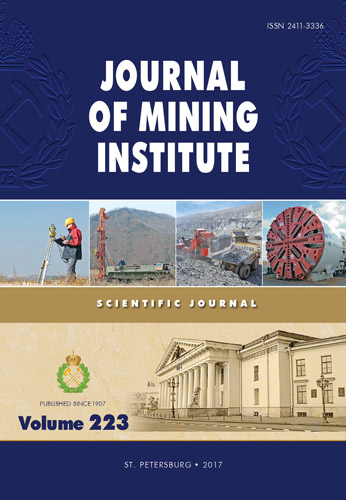Deposits of gold-quartz formation in the Priamur province
- 1 — Ph.D., Dr.Sci. Chief researcher Research Geotechnological Center FEB RAS
- 2 — Ph.D. Leading researcher Institute of Geology and Nature Management FEB RAS
Abstract
A description of gold-quartz formation deposits in the Priamur gold province is presented. Prevalence of gold-quartz deposits defines metallogenic profile of the province and presence of numerous rich placers. Deposits are attributed to frontal, middle and near-bottom parts of the ore pipe. Frontal part of the ore pipe contains a major part of the deposits. They are small and consist of scattered quartz, feldspar-quartz and carbonate-quartz veins. The ore is characterized by erratic percentage of gold, bonanzas can be found. Gold is free, ranging from fine to big grains and small nuggets. It is associated with arsenopyrite, galenite, sometimes with antimonite. Among trace elements can be copper, mercury, antimony and arsenic. Prevalence of frontal deposits in the province points to significant prospects of finding a rich deep mineralization in the middle part of ore pipe. Middle part of the ore pipe contains intermediate and small deposits. Ore bodies are often represented by veined and veinlet-disseminated zones, sometimes zones of metasomatites. For gold-quartz ores, free native gold can commonly be found, usually of fine and very fine grain size. Among ore minerals, apart from arsenopyrite, pyrite and galenite, scheelite is frequently observed.
